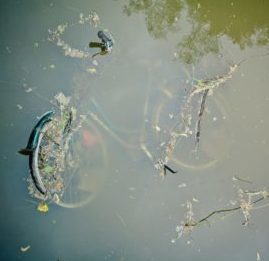The Gowanus Canal has a long history that’s led to its current state of being NYC’s most toxic body of water to date. It’s now at the mercy of rezoning plans and environmental health efforts of restoration. However, can such a hazard zone be truly saved? Or is it a permanent lesson to learn regarding site safety?
From Industrial Gateway to E.P.A.
In the mid-19th century, the City of Brooklyn was the United States’ third-largest city. Even before hipsters flocked there. Next to what will become Long Island City was the Gowanus Canal, functioning popularly as a transportation system. And, not-so-popularly, an informal sewage system.
If you assumed that the dumping was one of the causes for the Gowanus Canal’s current situation, you would be right. But it wasn’t just garbage dumping from residents. The real culprit was the coal-based industries that began cropping up around the canal.
A Literal Dumping Ground
Several plants along the upper canal took in coal and, using large amounts of available canal water, which allowed the factories to convert the coal to coke, liquids, and gases.
Specifically, the gases were used for heating, light, and fuel for factory engines. As a result, the wastewater and coal tar were dumped back into the canal. Combined with the already accumulating garbage and blood from slaughterhouses, it was a stew of poison in the making.
After years of almost no corrective measures and plans put into place, in 2010, the Environmental Protection Agency (EPA) declared the Gowanus Canal a Superfund site, a designation title reserved for the most chemically contaminated areas in the country. For the Superfund Record Collections, you can look at the page here.
Staying Clean While Getting Dirty: Why PPE is Important
Now, only one section of the canal is officially ‘clean‘. However, workers are making sure that they keep waste contamination to a minimum.
According to OSHA per. 1910.1030, “Employers must institute measures to prevent exposure to recognized hazards, including the selection of appropriate PPE.”
As an example, EPA Community Involvement Coordinator Christos Tsiamis, who is overseeing the Gowanus Canal Superfund cleanup, wore a hazmat suit in the process to touch the sediment during a press tour of the cleanup site.
The Lessons to Learn
Now, the canal is one of the filthiest bodies of water in NYC. From industrial thrive point to industrial embarrassment. There was no official committee to protect the canal or monitor the funds for proper upkeep. Residents, landowners, and possible contractors now conduct business around a manmade cesspool that took too long to be noticed and far longer to be corrected.
With the help from the EPA, and environmentalists onboard the Superfund project, there is hope. The canal will be at full restoration in 2022.
And next time, maybe not become another dumping ground in the face of a second industrial boom.

